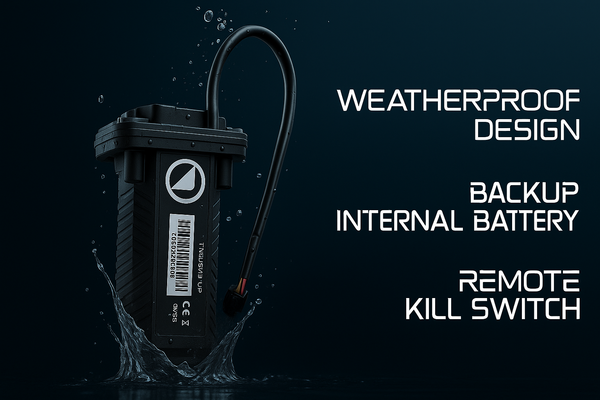2025 Tesla Model S vs 2025 Polestar 5
Dive into a detailed, real‑world comparison of the 2025 Tesla Model S and the all‑new Polestar 5, exploring design, range, charging, tech, safety and long‑term ownership so you can pick the luxury EV that truly fits your life.
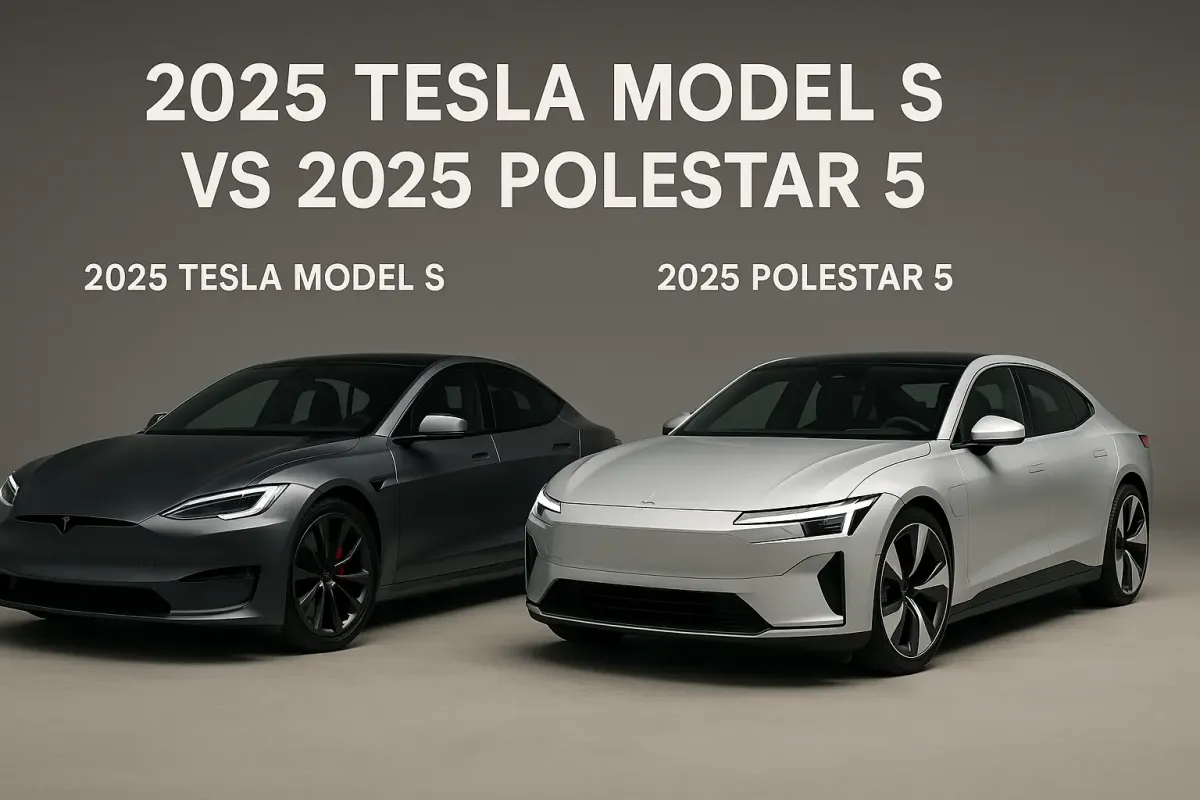
Introduction
Electric grand tourers have become the new icons of automotive innovation. On one side stands the latest evolution of Tesla’s flagship Model S, refined after more than a decade on the market. On the other, the Polestar 5, a Scandinavian newcomer that blends performance with a laser‑focus on sustainability. This guide draws on multiple sources—official manufacturer data, engineering briefings, industry previews and an in‑depth YouTube breakdown—distilled into one clear, conversational read.
Our goal is simple: strip away jargon and marketing hype to reveal how these sedans behave in daily life, what they really cost to own and why their design philosophies differ. Whether you crave cross‑country range, track‑ready acceleration or an interior crafted from recycled fibers, you will leave with the insight needed to make a confident decision.
Why This Comparison Matters in 2025
Global sales of electric vehicles have surged past the fifteen‑million mark, and the premium segment is now a fierce battleground. Tesla continues to enjoy brand recognition and an unmatched charging ecosystem, yet fresh challengers are reshaping expectations around luxury and sustainability. The Polestar 5 arrives with a bonded‑aluminium body, an 800‑volt electrical system and a cabin trimmed in eco‑friendly composites. Understanding their strengths today helps early adopters lock in incentives, anticipate depreciation and pick a charging strategy before the market gets crowded.
At the same time, regulators tighten efficiency targets, battery tech advances at breakneck speed and consumers demand responsible sourcing for every component. Comparing these flagships is not just about horsepower; it is about how technology, ethics and cost converge in the next chapter of personal mobility.
In‑Depth Design Breakdown
Exterior presence
Tesla’s Model S retains its sleek silhouette and famously low drag coefficient. Subtle tweaks to the front fascia, new paint finishes and aero‑optimized wheels sharpen the look without abandoning the minimalist DNA that made the original a design disruptor. Flush door handles and hidden sensors keep surfaces clean, reducing turbulence and wind noise.
Polestar 5 takes a bolder stance. Sculpted rear haunches, a low clamshell hood and pixel LED lighting create a silhouette that feels both athletic and unmistakably Scandinavian. The bonded‑aluminium platform allows crisp panel gaps and a long wheelbase, giving the car grand‑tourer proportions without excessive overhangs. Matte paint options and 22‑inch aero alloys underline its modern, sustainable ethos.
Color and aero
Tesla offers classic shades like Pearl White and Midnight Silver alongside a deep Ultra Red that shifts tone with light. Wheel choices range from efficiency‑minded 19‑inch rims to aggressive 21‑inch turbines. Polestar counters with muted earth tones and satin finishes that highlight its eco credentials. Integrated spoilers, flush glazing and airflow channels around the wheel arches keep drag low despite the larger rolling stock.
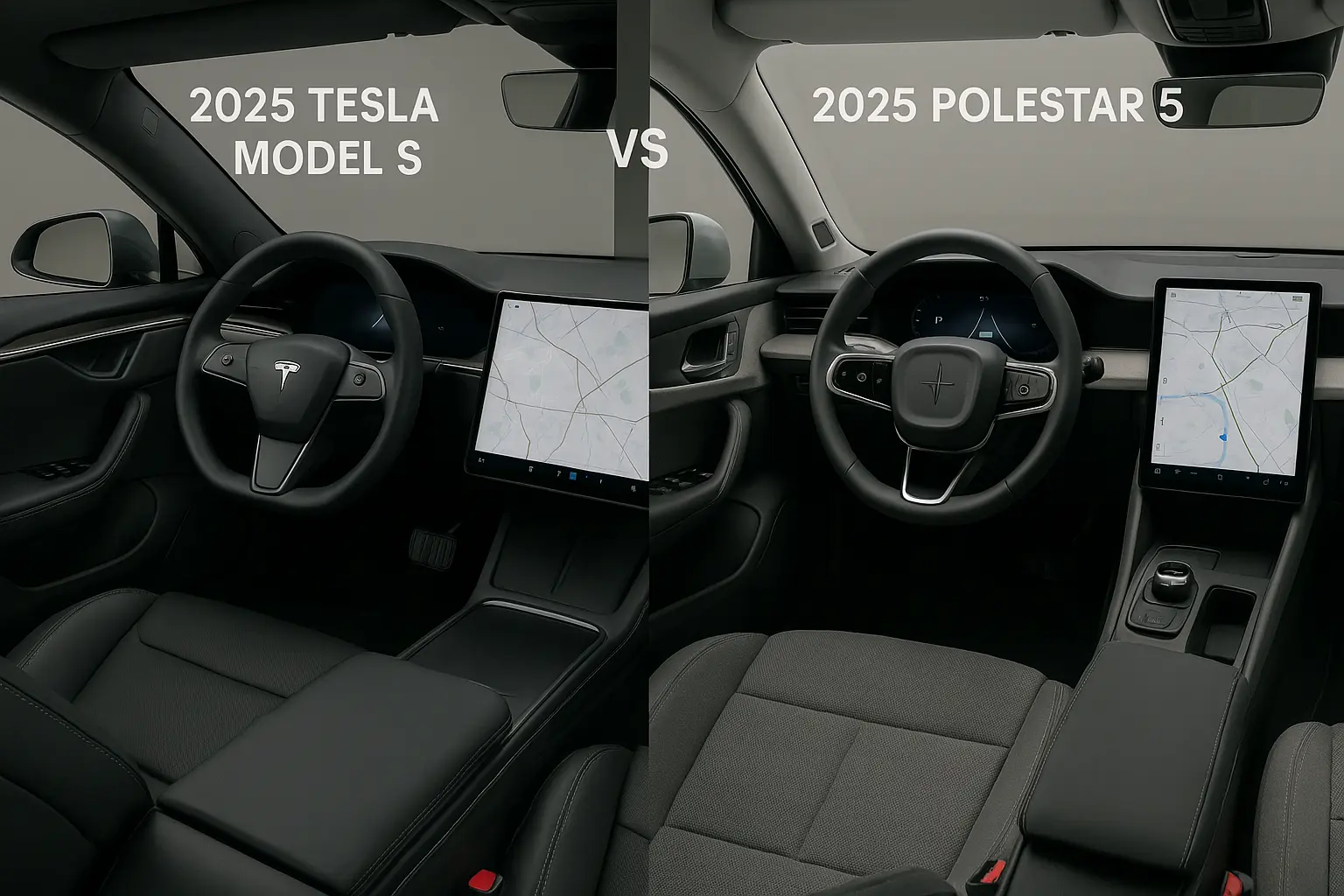
Inside the Cabins
Materials and layout
Step into the Model S and you are greeted by a sweeping dashboard dominated by a 17‑inch landscape touchscreen. Real‑wood veneers meet synthetic leather seats, creating a tech‑lounge ambience. A secondary display behind the steering wheel presents speed, navigation and driver‑assist data, while rear passengers enjoy their own eight‑inch screen for climate and entertainment.
Polestar 5 embraces sustainability without sacrificing luxury. The cabin swaps leather for flax‑based composites, recycled PET fabrics and reclaimed fishing‑net carpets. The concept’s four captain’s chairs suggest a lounge‑like layout, yet production models are expected to offer a traditional rear bench for five‑seat flexibility. Dual trunks—a compact frunk and a generous rear hatch—leverage the EV skateboard platform for impressive practicality.
Screens and controls
Polestar opts for a 15‑inch portrait display running an Android‑based interface, flanked by a 12.5‑inch digital gauge cluster. Physical buttons are limited to steering‑wheel toggles and a slim climate bar, blending tactile control with modern minimalism. Tesla keeps nearly every function on the central screen, but the latest software groups common settings into quick‑access tiles, reducing menu diving. Both cars support over‑the‑air updates that can redesign the interface overnight.
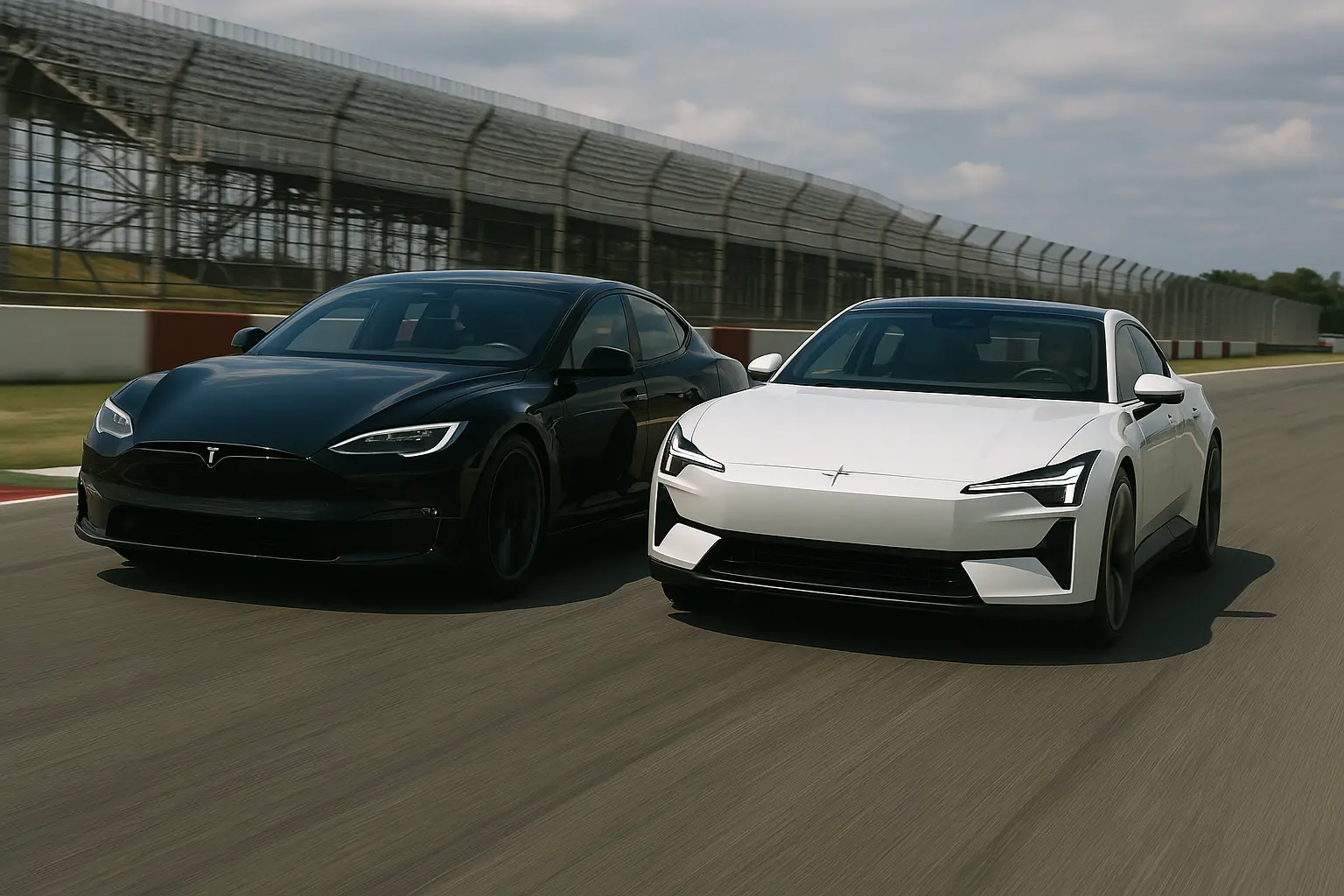
Performance Beyond Acceleration
Straight‑line speed still grabs headlines, yet real‑world performance also depends on chassis tuning, torque delivery and thermal management.
Tesla Model S
The Dual‑Motor variant delivers a 0‑to‑60 time of roughly 3.1 seconds, while the Plaid trim drops below two seconds thanks to three carbon‑sleeved rotors producing more than a thousand horsepower. Adaptive air suspension continuously adjusts damping, striking a balance between highway glide and canyon‑carving precision. Brake‑by‑wire modulation feels natural, and regenerative braking allows near‑one‑pedal driving in traffic.
Polestar 5
Engineers target 884 horsepower and 900 Nm of torque from a dual‑motor 800‑volt setup. Early prototypes hint at sub‑three‑second launches, but the focus extends to mid‑range punch and high‑speed stability. A bonded‑aluminium chassis increases torsional rigidity, letting the suspension remain supple without sacrificing turn‑in response. Polestar also promises a rear‑biased torque split for a more dynamic feel through sweeping bends.
Specs & Real‑World Use
| Specification | 2025 Tesla Model S | 2025 Polestar 5 |
|---|---|---|
| Acceleration 0‑60 mph | 3.1 s Dual‑Motor / 1.99 s Plaid | Target < 3.0 s |
| Estimated range | 405 mi Dual‑Motor / 359 mi Plaid | Target 300‑400 mi |
| Drivetrain | Dual‑Motor AWD / Tri‑Motor AWD | Dual‑Motor AWD |
| Peak DC charge rate | 250 kW | 350 kW (800‑V) |
| Battery capacity | Large flat pack (est. 100 kWh+) | 103 kWh (est.) |
| Cargo volume | 28 cu ft rear + frunk | Dual trunk design (TBD) |
EPA and WLTP test cycles differ, so expect highway range to sit roughly ten to fifteen percent below the headline numbers. Both sedans can still cover Los Angeles to San Francisco with a single fast‑charge coffee stop.
Software, Updates, and Infotainment
Tesla remains the benchmark for frequent over‑the‑air enhancements. New features roll out monthly, from gaming upgrades to tweaks in suspension calibration for track days. The smartphone app lets owners pre‑condition the cabin, schedule charging during off‑peak hours and view live camera feeds for added security.
Polestar leverages native Google Maps with real‑time charger availability, voice control via Google Assistant and seamless Spotify integration. OTA updates arrive in larger quarterly bundles, bundling navigation refinements with driver‑assist improvements. Both brands support wireless phone keys and remote climate control, but Tesla’s larger community means third‑party apps and accessories are more abundant.
Safety & Driver Assistance
Tesla Model S
A five‑star crash rating meets a camera‑only vision system that handles adaptive cruise, lane centering and automatic lane changes. Regular software updates refine object detection, and the hardware suite remains upgrade‑ready for future autonomy features.
Polestar 5
Safety heritage from Volvo informs every component. The sedan debuts a reinforced passenger cell, dual‑chamber airbags and hardware prepared for LiDAR integration. Expect Level 2+ assistance such as blind‑spot steering support, junction collision mitigation and a semi‑autonomous highway pilot.
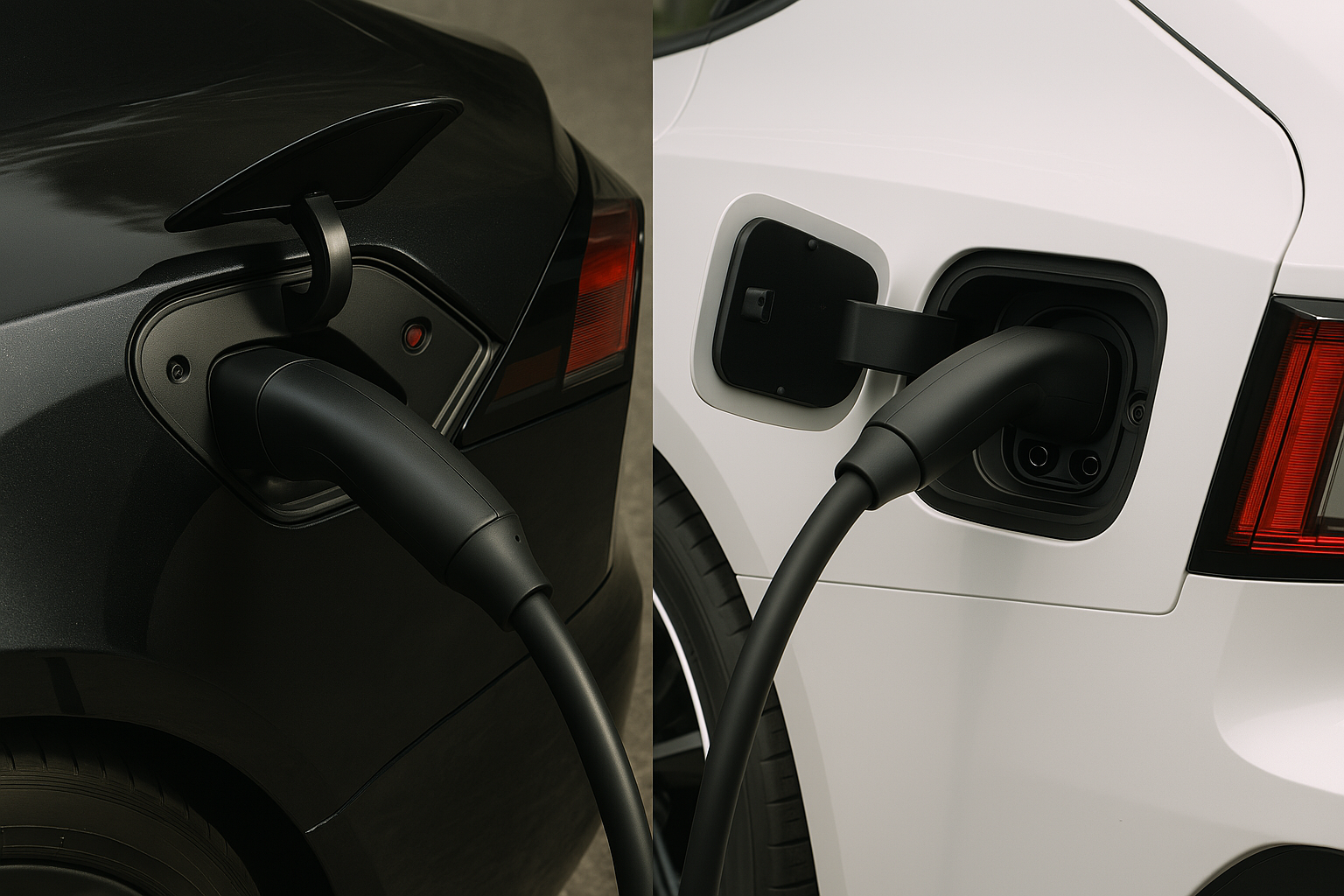
Charging: Availability and Convenience
Tesla’s proprietary network now exceeds sixty‑thousand fast‑charge stalls worldwide. Plug‑and‑play functionality and automatic billing make road trips straightforward, and route planning algorithms factor stall occupancy and weather.
Polestar taps into the open CCS infrastructure and recently showcased a ten‑to‑eighty percent recharge in ten minutes using silicon‑dominant cells. While network density still lags Tesla’s, partnerships with major charging providers are expanding rapidly. Home charging remains simple for both cars: a 240‑volt Level 2 setup adds roughly thirty‑plus miles of range per hour.
Comfort, Cabin Noise & Everyday Usability
Adaptive air suspension in the Model S glides over freeway expansion joints, while double‑pane glass suppresses wind roar above sixty miles per hour. Improved seat bolstering and a flat floor make long journeys less fatiguing. Small‑item storage is adequate up front but modest in the rear.
Polestar counters with seats crafted from breathable, eco‑friendly textiles that resist temperature swings. Engineers targeted low noise‑vibration‑harshness metrics, and the panoramic roof floods the cabin with natural light. A larger rear hatch opening and under‑floor cargo wells make family road trips and ski weekends a breeze.
Resale Value, Insurance, and Long‑Term Costs
Tesla’s residuals remain strong, buoyed by brand recognition and the convenience of its charging ecosystem. Insurance premiums sit above average, yet minimal maintenance—no oil changes, fewer moving parts—helps offset costs over a five‑year horizon.
Polestar offers a comprehensive warranty similar to its Swedish cousin. Early resale estimates suggest solid retention, especially among buyers who prioritise sustainable materials. The Polestar 5’s starting price is projected near six figures, positioning it between the Model S Plaid and high‑spec Porsche Taycan trims.
Conclusion
Both sedans deliver long‑distance capability, blistering acceleration and cutting‑edge tech. Choose the Tesla Model S if seamless access to a vast charging network and proven performance history top your list. Opt for the Polestar 5 if you value sustainable materials, avant‑garde styling and the promise of ultra‑fast 800‑volt charging. Either way, the future of electric luxury is here—quiet, quick and undeniably compelling. Share this guide with friends, drop your thoughts below and schedule a test drive to feel the difference firsthand.
FAQ – Popular Google Questions
How far can the Tesla Model S travel on a single charge?
The Dual‑Motor version is rated at roughly four‑hundred miles, though real‑world highway driving in mild weather averages around three‑hundred‑fifty.
What horsepower is Polestar targeting for the 5?
Engineers aim for about eight‑hundred‑eighty‑four horsepower from a dual‑motor 800‑volt setup.
How fast can the Polestar 5 recharge on a road trip?
Prototypes have demonstrated a ten‑to‑eighty percent top‑up in ten minutes on next‑generation 350‑kilowatt hardware.
Does the Model S still offer the Plaid variant in 2025?
Yes. The Plaid trim retains three motors, delivers more than a thousand horsepower and reaches sixty miles per hour in under two seconds.
Which sedan offers more cargo space?
Tesla lists twenty‑eight cubic feet behind the rear seats plus a front trunk. Polestar has not finalised numbers but plans dual trunks for added versatility.
Are over‑the‑air updates free on both cars?
Both brands include software updates at no extra cost, covering infotainment refinements, efficiency tweaks and safety enhancements.
What warranty covers the battery packs?
Tesla offers eight years or one‑hundred‑fifty‑thousand miles on the battery and drive unit. Polestar is expected to match or closely follow that figure.
Which vehicle depreciates less over five years?
Historically the Model S holds value well due to strong demand and a robust charging network, while Polestar’s sustainability story is expected to bolster resale as the brand gains recognition.




